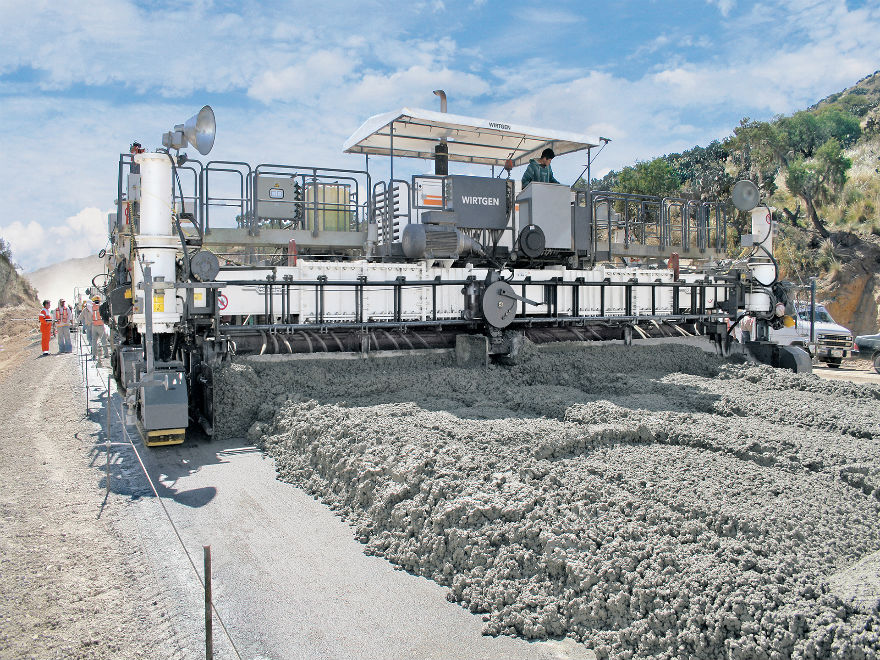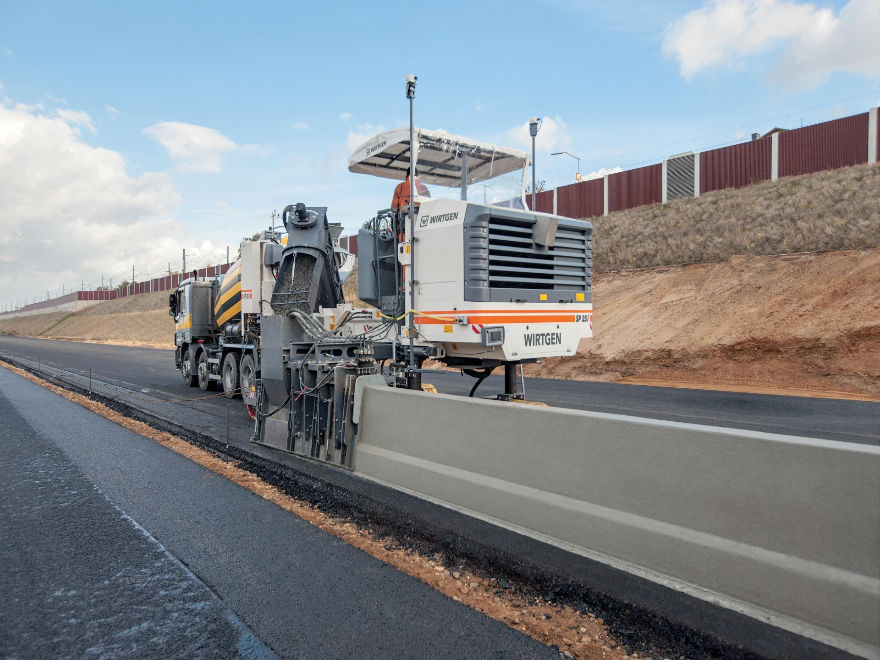Construction of concrete pavements with road construction modern plants
The following operations sequence is typical of the recessed pavement. First, the trucks unload the concrete in front of the paver. Then, the slip form paver spreads the concrete all over the width of the pavement with the bit or the plow and creates the concrete profile for the roadway with the slip form mould. The HF vibrators within the slip form manner vibrate at high frequency by expulsing air from the concrete and thus compacting it.
In dowel bars, tie bars and joints
The slip form paver keeps on working during the pavement operation; its work speed varies from 1 to 2 m per minute. At the same time, the paver also may insert dowel or joint bars in the fresh concrete. Such bars reinforce the concrete. The slots are then cut in the concrete pavement above the reinforcement. Said slots guarantee that the cracks unavoidable resulting from temperature tensions and fluctuations are deviated to the concrete pavement in a controlled manner.
A burlap dragging finish results in the required gripping
The road is leveled by finished beams and super-smoothers. A silicon piece usually dragged assures an anti-slip surface texture. It is usually used a curing unit for applying a dispersion to the fresh concrete so that the concrete cures homogeneously.
SLIDING FORMWORK
Inset paving sliding formwork
In the inset paving procedure, some trucks unload the concrete and place it in front of the sliding formwork paver. When the paving width is too big, an excavator or any other paver previously shares the material. Next, a spreading auger, or a spreading plough, depending on the model, spreads homogeneously the material all over the width of the paving. During the pass, the sliding reinforced formwork provides the concrete layer with the suitable shape. Some electrical vibrators, in turn, take charge of the material perfect compaction through frequently highly vibrations. The anchors and the dowels automatically insert themselves in the concrete which still is not set. To finish, the cross and longitudinal straighteners take charge of the last details of the new road.
Side sliding formwork
During the side sliding formwork, the concrete generally, moves from the concrete mixing machine to the filling device and from there, it is continuously transported to the side sliding formwork mounted on the machine, through a revolving conveyor belt or, as another choice, by means of a revolving intake auger. Depending on the client´s specifications, the formwork contains some electrical or hydraulic vibrators which homogeneously compact the concrete within the most varied compacting grades through high-frequency vibrations. During the advance movement of the sliding formwork paver for the side formwork, the sliding formwork produces the monolithic profile. In such a manner, a concrete product of excellent quality and optimal aspect is produced.
Treatment after concrete placement
- Maximal work width of 9.50 m, therefore the TCM fits for combining the standard devices SP 500 and SP 90 series.
- Machine of ulterior treatment of surfaces combined for further treatment of concrete slabs recently placed.
- Model with automatic spraying and brushing device.
- Equipped with four wheels.
- Modular structure for a simple adaptation to new work widths.
Learn about our offer of sliding formwork products – Sliding formwork pavers



